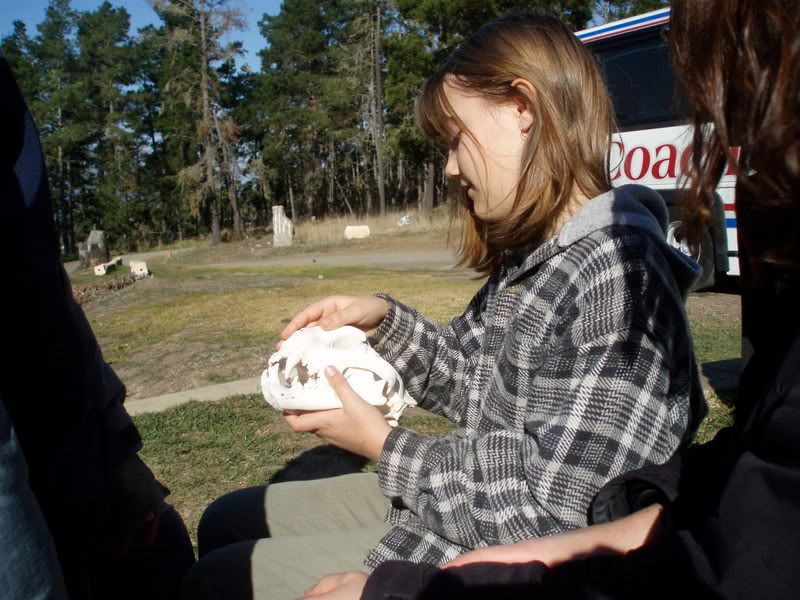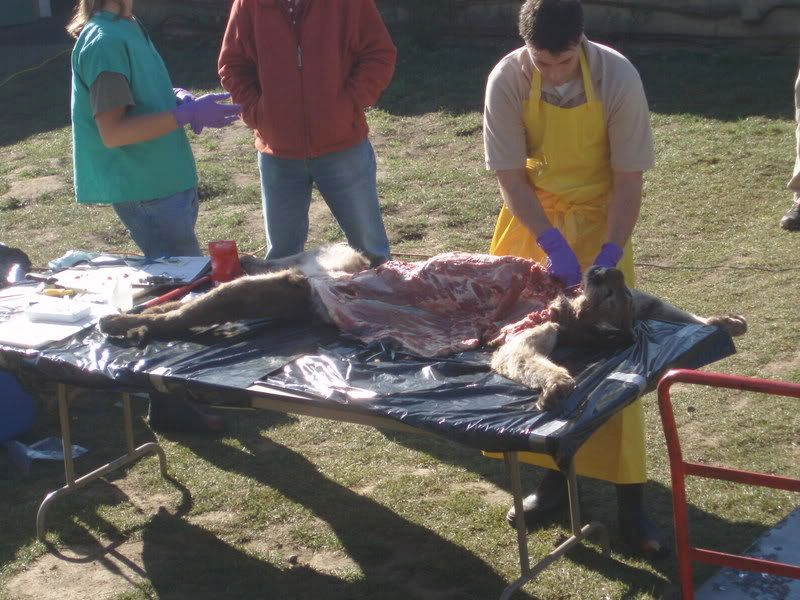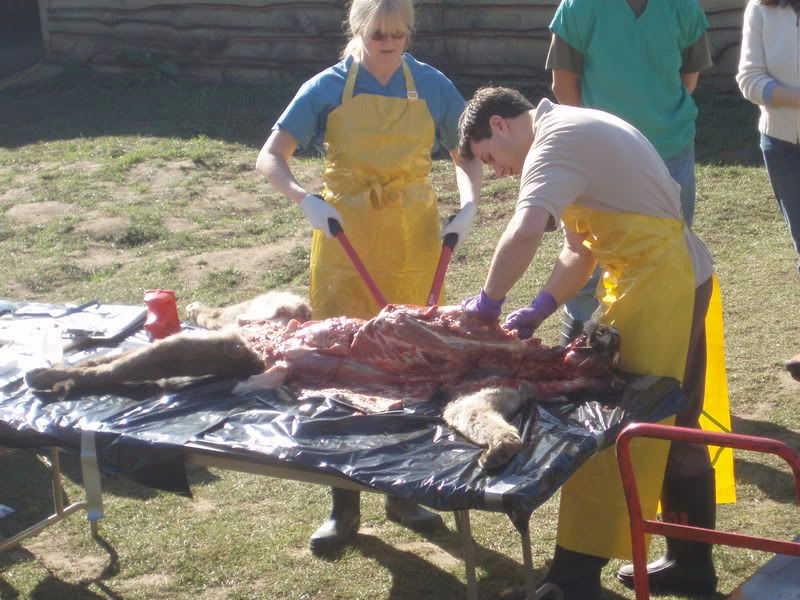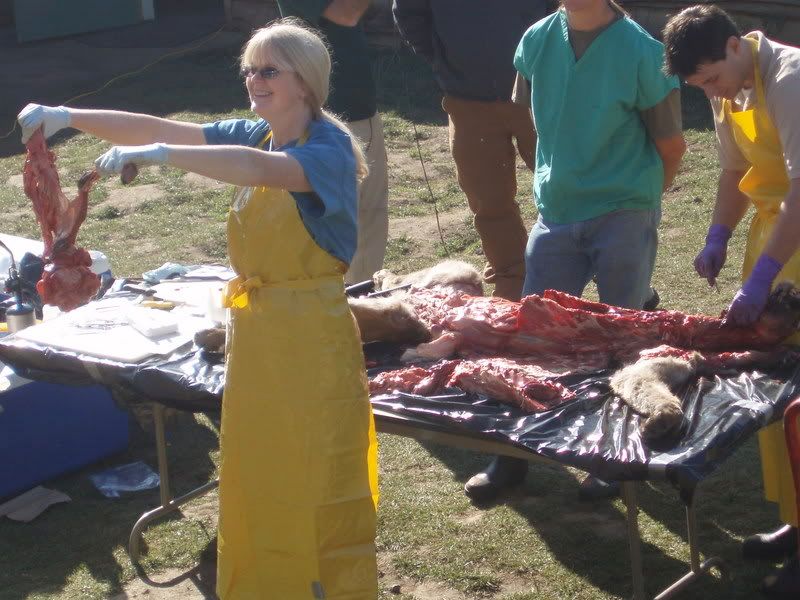

It wasn't all blood, guts and parasites. The weekend started innocently enough with our move from the Cousteau cabin down to a shag-carpeted, early 70's trailer typically reserved for summer-camp counselors. There were crafty ladies to make space for, a dozen quilters, beaders and silk painters. A retired teacher gladly shared her fish-print project with Ukiah and Aslin. Add to that some jr. high kids from LA and a contingent of marine scientists and camp was buzzing. A full house.
There were no s'mores 'round the campfire Friday night. The lodge seated nearly 100 for a presentation on the transmission of toxoplasma gondii and other land-animal parasites now infecting sea mammals, specifically sea otters. Power-point presentations illustrated the life cycle of the bugs, percentage of cats/horses/possums infected, and finally the resulting brain disease in otters. Four years of collaborative research summed up in 2-hours. Stories of skunks building nests in live-traps set for possums and the mid-lecture passing of a grocery bag full of candy, kept all engaged. Only one jr-higher was led to the exit by his teacher.




Otters trigger the "ohhh... isn't he cute," response from the public. Dr. Melissa Miller and her team of wildlife pathologists exploit this, employing otters to educate us on the ecological health of our land and sea environments. But their work isn't limited to cuddly creatures. So, when an emaciated mountain lion with no visible signs of trauma shows up dead in Marin County, the Dept of Fish and Game and UC Davis Wildlife Health call Dr. Miller to investigate. Saturday, she brought her investigation to us. Pealing the skin and fur away, we're shown that the animal has almost no fat, a sign that it isn't eating. The parasite found in abdominal muscle, is encysted (?)- not harmful. Pruning shears snaps ribs, revealing a chest cavity full of blood. The lungs are too small, heart too pale, stomach empty. We're assured that the smell of whale innards is much worse. It's not until they go to look at the brain that they discover the broken jaw. The absence of bruising of the head and neck leave some mystery, but the evidence points to blunt-force trauma (car). Cause of death- internal hemorrhage/starvation.




No comments:
Post a Comment